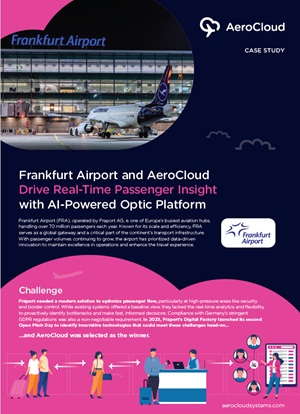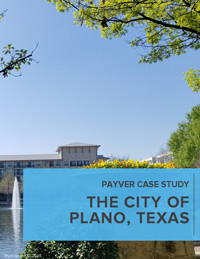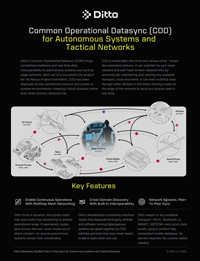AVAILABLE 24x7
888.662.2724
AVAILABLE 24x7
(888) 66CARAH
Fast & Accurate
Request A Quote
Quick Response
Chat With Us
Carahsoft, in conjunction with its vendor partners, sponsors hundreds of events each year, ranging from webcasts and tradeshows to executive roundtables and technology forums.
Government Events and Resources
Events

Forrester
Full Throttle, Firm Control: Build Your Trust Strategy for Agentic AI for State & Local Government
Event Date: November 13, 2025
Hosted By: Forrester & Carahsoft
Hosted By: Forrester & Carahsoft
State and local leaders are under pressure to deliver modern services, fast—and agentic AI looks like the accelerant. But autonomy introduces new risks you’re not staffed or tooled to absorb: emergent behaviors, goal hijacking, privilege sprawl and cascading failures that evade traditional controls. This session introduced Forrester’s AEGIS (Agentic AI Enterprise Guardrails for Information Security) framework, a practical blueprint to go faster without gambling on trust.
During this webinar, we demystified how agentic AI changes the security paradigm and showed how AEGIS operationalizes guardrails across six domains—GRC, Identity & Access, Data Security & Privacy, Application Security, Threat Management and Zero Trust principles—so you can protect intent, data and infrastructure as you scale. We also translated key AEGIS principles—least agency, continuous assurance and explainable outcomes—into steps your teams can implement now, from governance-first readiness to identity- and data-centric controls that harden autonomy safely. Attendees left with a phased roadmap SLED teams can execute—and the confidence to accelerate innovation without widening your attack surface.
Key Takeaways
- Translate urgency into guardrails. Attendees now understand how agentic AI shifts security from infrastructure-centric to intent-centric and why legacy controls miss emergent agent behaviors.
- Apply AEGIS across six domains. Attendees are now able to map their current capabilities to GRC, IAM, Data Security & Privacy, AppSec, Threat Management and Zero Trust to spot fast-fix gaps.
- Protect intent, data and workloads. Attendees can now implement early “no-regrets” controls (privilege scoping, data segmentation/labeling, guardrail patterns in pipelines) compatible with their ZT roadmap.
- Phase adoption. Attendees will now start with governance & risk, mature IAM for agents, then expand through data and app security into detection/response and Zero Trust patterns.
- Translate urgency into guardrails. Attendees now understand how agentic AI shifts security from infrastructure-centric to intent-centric and why legacy controls miss emergent agent behaviors.
- Apply AEGIS across six domains. Attendees are now able to map their current capabilities to GRC, IAM, Data Security & Privacy, AppSec, Threat Management and Zero Trust to spot fast-fix gaps.
- Protect intent, data and workloads. Attendees can now implement early “no-regrets” controls (privilege scoping, data segmentation/labeling, guardrail patterns in pipelines) compatible with their ZT roadmap.
- Phase adoption. Attendees will now start with governance & risk, mature IAM for agents, then expand through data and app security into detection/response and Zero Trust patterns.
Fill out the form below to view this archived event.
Resources
Featured
Discover how leading organizations harness Tomorrow.io on our customer stories page. See real-world successes from companies like Uber, Ford, and JetBlue in boosting efficiency and resilience through our innovative weather technology.
Stay updated with the latest in resilience best practices on the Tomorrow.io blog. Discover cutting-edge insights, success stories, and expert advice on leveraging weather intelligence technology for enhanced resilience, preparedness, and response.

AeroCloud deployed Optic, computer vision driven passenger flow monitoring solution, as part of a pilot initiative at Frankfurt Airport. The technology integrates with existing CCTV infrastructure to anonymously track passenger flow in real time, without requiring any additional hardware or invasive...
With increasing passenger traffic, PSP found it was losing more and more manhours to gate assignments. PSP turned to automation technology to solve the issue. It centralized and automated all gate operations through AeroCloud’s Gate Management System.

The City of Plano partnered with Blyncsy to explore how its Payver technology could replace time-consuming, expensive manual road inspections. Using AI and crowdsourced dashcam footage, Payver delivered detailed condition reports on key roadway assets in a fraction of the time and cost, while loweri...

Learn more in this case study of how Effectual was able to migrate Ginnie Mae to AWS GovCloud!
The US Navy has successfully migrated critical mapping and data analysis technology from Oracle to EDB Postgres, resulting in significant cost savings and improved performance. EDB Postgres has proven to be a reliable and high-performing solution that meets the Navy's stringent requirements for ...
Common Operational Datasync (COD) is a solution that enables continuous operations for autonomous systems and tactical networks by providing resilient, multi-hop mesh networking. The technology is network-agnostic, allowing disparate vehicles and software to sync critical data like telemetry and AI ...

Discover PTFS Knowvation GS delivering content management, geospatial intelligence, and digital asset management. Knowvation is used globally, with an extensive portfolio of use cases including document intelligence, geospatial intelligence, citizen engagement, and record and data management.
Public Sector organizations can leverage the combined power of Nutanix and MariaDB to achieve a robust, scalable, and cost-effective open-source database management solution. This strategic partnership delivers a seamless and integrated experience, empowering modern application development while red...




